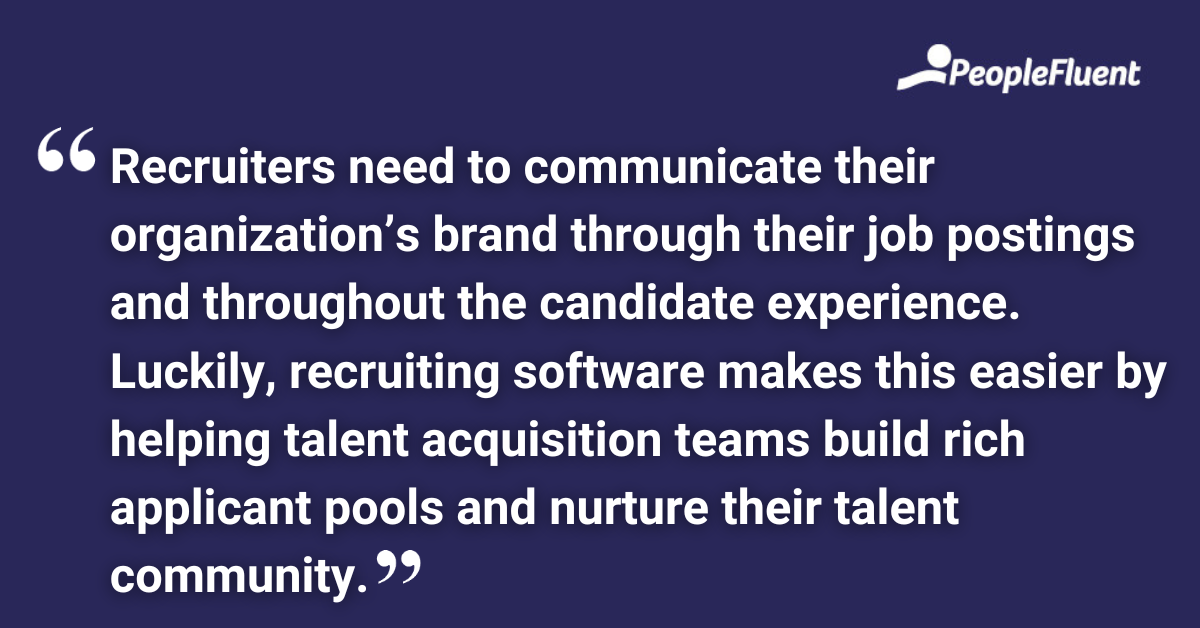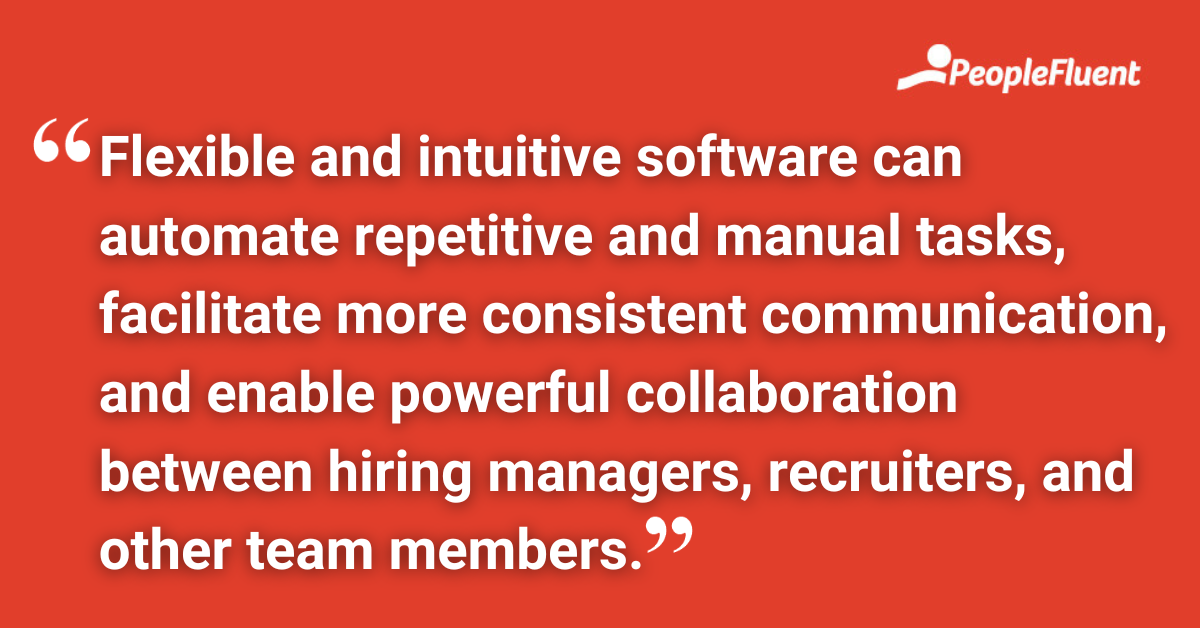Published: Dec 15, 2022Time to read: 7mins Category: Insights
5 Can’t-Miss Recruiting Trends for 2023
As 2022 comes to a close, the recruiting landscape remains as dynamic as ever. Organizations and employees are shifting their priorities, and recruiters need to be aware of job market trends if they’re to attract top talent to their organizations.
Below we break down five recruiting trends for 2023 and reveal what organizations can do to get ahead.
Trend #1: Hiring Competition Remaining Steady Despite Wavering Economic Conditions
Talent acquisition efforts aren’t likely to slow down in 2023. Although hiring freezes and layoffs are happening, they’re not yet occurring at a significant rate. The U.S. Bureau of Labor Statistics reports that the rate of layoffs across all industries is currently less than one percent. Companies in industries such as hospitality, manufacturing, and logistics are still competing for top talent in order to meet pent-up consumer demand.
The growing number of retirees is also expected to keep employers hungry for talent and limit dramatic spikes in unemployment. In fact, the labor force participation rate is projected to fall to 60.1% by 2031. Competition for talented and skilled workers isn’t likely to ease up any time soon.
While government intervention may eventually cool a hot job market and temper inflation, employers are—understandably—reluctant to let go of talent. After enduring two years of intense shifts in the workforce, recruiting and retaining people requires a thoughtful strategy.
Recruiting teams know the roles they’re hiring for are as competitive as ever. Employees are initiating 80% of all workplace separations as they continue to seek out better benefits, pay, and overall work-life balance. To stay relevant and competitive, recruiters need access to technology that helps them source, select, and scale talent.

KEEP READING | ‘The Great Resignation Debate: Do We Have a Labor Shortage or a Skills Shortage?’
Trend #2: Organizations Optimizing a Positive Brand Impression
Job seekers are researching organizations’ reputations and brands before they apply for positions. They’re far less willing to spend their time applying for roles with organizations that don’t align with their own beliefs and values. Prospective employees—much like consumers—also want to be associated with businesses that are respected in their industry.
Employers are beginning to see the importance of maintaining (or even improving) their brand image in order to attract top talent, but engaging and holding job seekers’ attention takes considerable effort. Recruiters need to communicate their organization’s brand through informative but digestible job postings and throughout the candidate experience. Building a consistent, clear, and efficient experience for applicants makes the hiring process pleasant and engaging for prospective employees.
Luckily, recruiting software makes this easier by helping talent acquisition teams build rich applicant pools and nurture their talent community. Configurable software enables hiring teams to build easy-to-navigate applications that speak not only to the job requirements but also the organization’s culture and brand.
High-quality recruiting software optimizes the candidate experience—and drives key talent through the door—with features such as:
- Customizable career portals
- Branding and communication channel tools
- Career site platforms
- Job description templates
- Talent pools
- Email nurturing
Trend #3: Candidates Seeking Personalized Experiences
Adding intentional and high-impact human touch points to the recruiting experience is critical as recruiters increasingly rely on technology to streamline the hiring process for candidates. Personalizing a candidate’s experience with your technology helps you avoid candidates feeling disconnected from your organization.
Leveraging adaptable capabilities in recruiting software makes the recruitment process more candidate-centric. Configurable email and SMS message templates in recruiting software personalize the process for candidates while allowing recruiters to work as efficiently as possible. Organizations can further strengthen connections with candidates by letting applicants self-schedule their interviews. This eliminates the need for multiple back-and-forth calls or emails between candidates and recruiters and demonstrates to applicants that their time is valued.

RELATED READING | ‘Highly Configurable & Candidate-Friendly: Why You (And Your Applicants) Win With PeopleFluent Recruiting’
Trend #4: Artificial Intelligence Increasingly Assisting in Quantifying Candidate Quality
Artificial intelligence (AI) offers a range of useful tools to recruiters and will continue to make inroads into the hiring process in 2023. The best AI speeds up manual processes and offers quality insights talent acquisition teams can use to make more informed and equitable hiring decisions. Flexible and intuitive software can automate repetitive and manual tasks, facilitate more consistent communication, and enable powerful collaboration between hiring managers, recruiters, and other team members.
AI tools like match scoring provide data-driven insights that assist in quickly screening candidates when you receive a high-volume of applications. Talent acquisition teams can also compare applicants’ match scores alongside their team scores for a more holistic view of each candidate.
Data-driven processes powered by AI give recruiters the information they need to make accurate decisions and streamline the entire process. Applicant data helps you identify your target candidates and their interests. This information allows talent acquisition teams to customize the candidate experience and showcase aspects of your organization that people care about most.
Trend #5: Employers Offering Ample Opportunities for Growth Recruit the Best Talent
The workforce at large is going through a mindset shift. After nearly three years of professional and personal uncertainties, employees continue to redefine their priorities around work. People are seeking employment with organizations that will give them the work-life balance they’re after, and many are going to great lengths to get what they want. In fact, 45% of workers who changed jobs in 2021 also changed industries.
Employees want to develop, grow, and be adequately challenged. A Guild survey from August 2022 found that two-thirds of workers want to move into a new role, and 64% of all workers hope to be in a new role within the next two-to-five years.
To retain and attract top talent, organizations must demonstrate to candidates that they’re able to meet the growing demand for skills development opportunities. Organizations that use their application process as a way to showcase opportunities like career development pathways and learning initiatives will fare better than others.
Candidates Are Speaking Up—Is Your Recruiting Team Listening?
In 2023 and beyond, the candidate experience will be central to successful recruiting efforts. Employees will continue to seek opportunities with organizations that align with their values and provide opportunities for growth. Brand identities will immediately signal to potential candidates whether an organization will be a good fit for them, so honing your brand is critical.
Connecting to candidates and offering a personalized application experience will also become more important. People are being more selective about where they apply. Personalization can make organizations stand out from the crowd.
Organizations can showcase their brands and offer these more personalized experiences with configurable recruitment software. AI integrations with such software will also streamline the talent search by automating processes and giving leaders the data they need to move forward with the highest-quality candidates.
Job seekers aren’t shying away from their wants and needs, and they’re willing to upskill or change industries to get what they want. Organizations that recognize and adapt to these changes will recruit the top talent to their businesses.
READ MORE ON RECRUITING | ‘6 Ways Automation Can Improve the Employee Onboarding Experience’
Get Ahead of the Trends With Recruiting Software Designed to Meet Candidates’ Needs
PeopleFluent Recruiting can help you hire and retain the best candidates for your organization. Watch our webinar to learn how, or request a demo today!